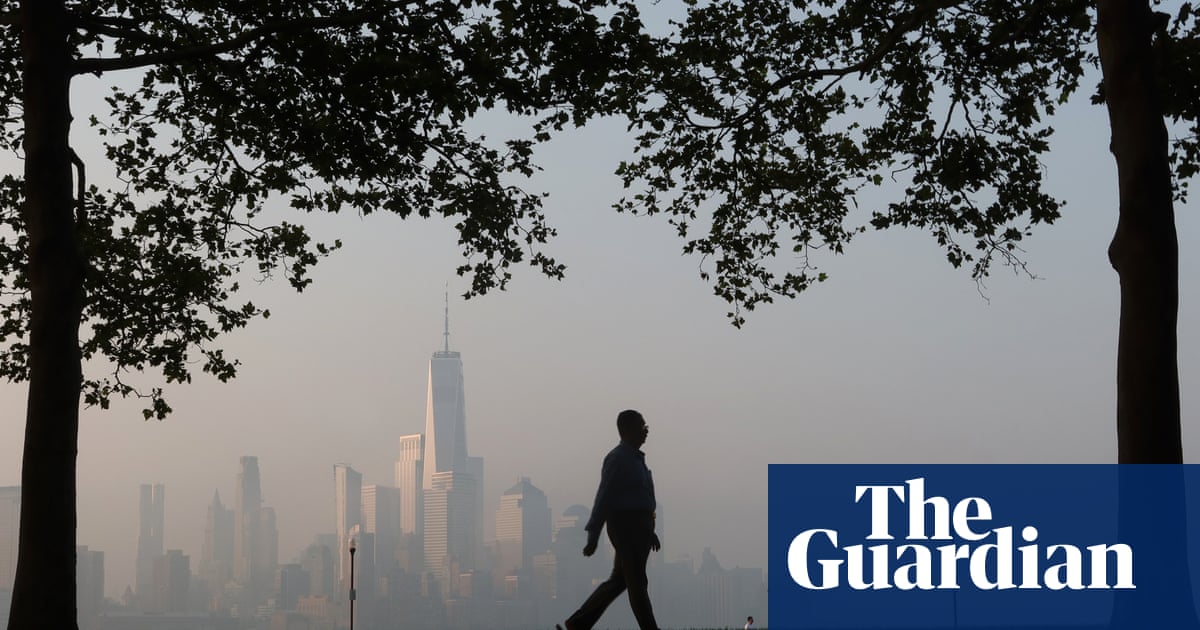Almost half of Americans are breathing in dangerous levels of air pollutants, a new report shows, a rise compared with a year ago and likely to further increase in coming years thanks to the climate crisis and the Trump administration’s sweeping environmental rollbacks.
Just over 156 million people live in neighborhoods with unhealthy levels of soot or smog – a 16% rise compared with last year and the highest number in a decade, according to the American Lung Association (ALA) annual state of the air report.
Soot and smog can cause premature death and increase the risk of an array of serious medical conditions such as asthma attacks, heart attacks and strokes, preterm births and impaired cognitive functioning in later life. Particle pollution also increases the risk of lung cancer.
Both pollutants are made worse by heat waves and wildfires – extreme weather events getting more intense and widespread due to human-made global heating.
Every year, the ALA grades exposure to unhealthy levels of ground-level smog (ozone pollution), and year-round and short-term spikes in soot (fine particle pollution/PM2.5) over a three-year period (2021 to 2023).
Its latest analysis found that almost 43m people live in areas with failing grades for all three measures. A person of color is more than twice as likely as a white American to live in a neighborhood with unhealthy levels of smog and soot. But Latino Americans are the most impacted, and three times more likely to be breathing in both toxic air pollutants.
PM2.5 or soot comes from wildfires, wood-burning stoves, coal-fired power plants and diesel engines among other industrial sources – and can be deadly. The new report includes data from summer 2023, when smoke from wildfires across Canada lit up the sky and engulfed midwestern and eastern states in soot.
Ozone or smog is a potent respiratory irritant likened to causing sunburn of the lungs. After years of progress on cleaning up ozone, some communities are seeing the worst smog in years.
The climate crisis-driven extreme heat and wildfires contributed to the increase in ozone levels for many parts of the country, most notably in central states from Minnesota to Texas. Warmer temperatures increase the risk of ozone forming and makes it harder to clean up.
“Families across the US are dealing with the health impacts of air pollution every day, and extreme heat and wildfires are making it worse.Air pollutionis causing kids to have asthma attacks, making people who work outdoors sick, and leading to low birth weight in babies,” said Harold Wimmer, president and CEO of the American Lung Association.
Only two cities, Bangor, Maine, and San Juan, Puerto Rico, were ranked as clean cities with no spikes in smog or soot, reflecting an overall worsening of air quality across the country, the report found.
“Efforts to slash staff, funding and programs at the Environmental Protection Agency (EPA) are leaving families even more vulnerable to harmful air pollution,” Wimmer said.
The EPA was created in 1970 by the Nixon government amid increasing protests over unchecked industrial expansion by public health and environmental advocates, as well as communities bearing the brunt of air, water and land pollution.
The Trump administration has made dismantling climate and environmental regulations, policies and programs a top priority, and has already taken steps to gut the EPA by ordering mass layoffs and funding freezes. Environmental justice has come under particular attack, with Trump conflating efforts to address decades of environmental racism that led to poor air quality from heavy industry, landfills and highways being deliberately located in communities of color with diversity, equity and inclusion (DEI) policies.
Even before Trump 2.0, almost 73 million people lived in counties where neither the ozone nor PM2 pollution levels are being monitored, according to the association, a public health data black hole likely to get worse as the funding cuts hit.
